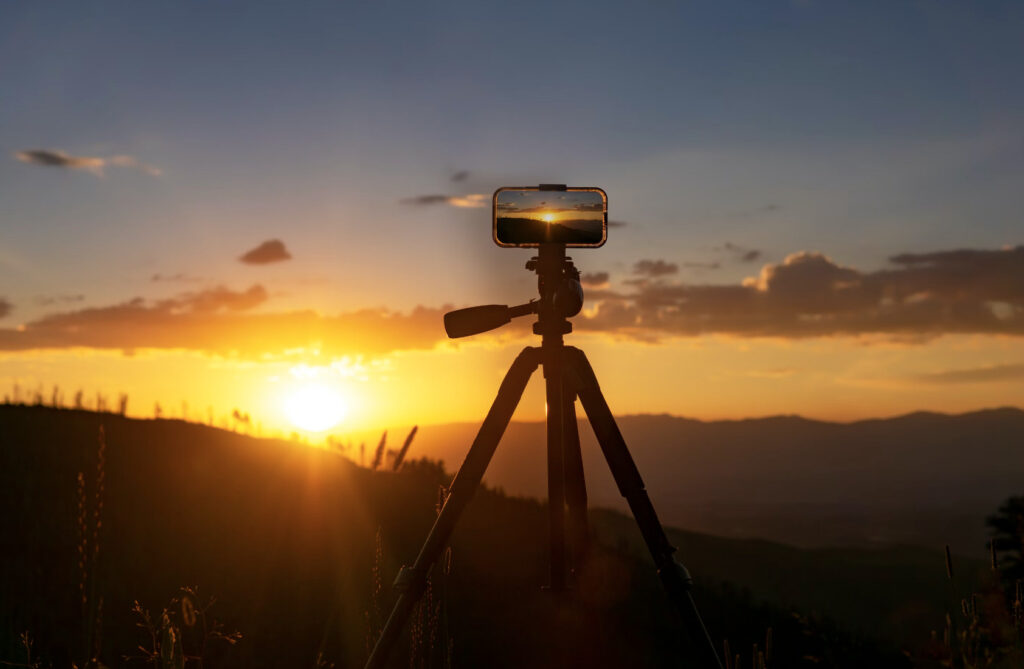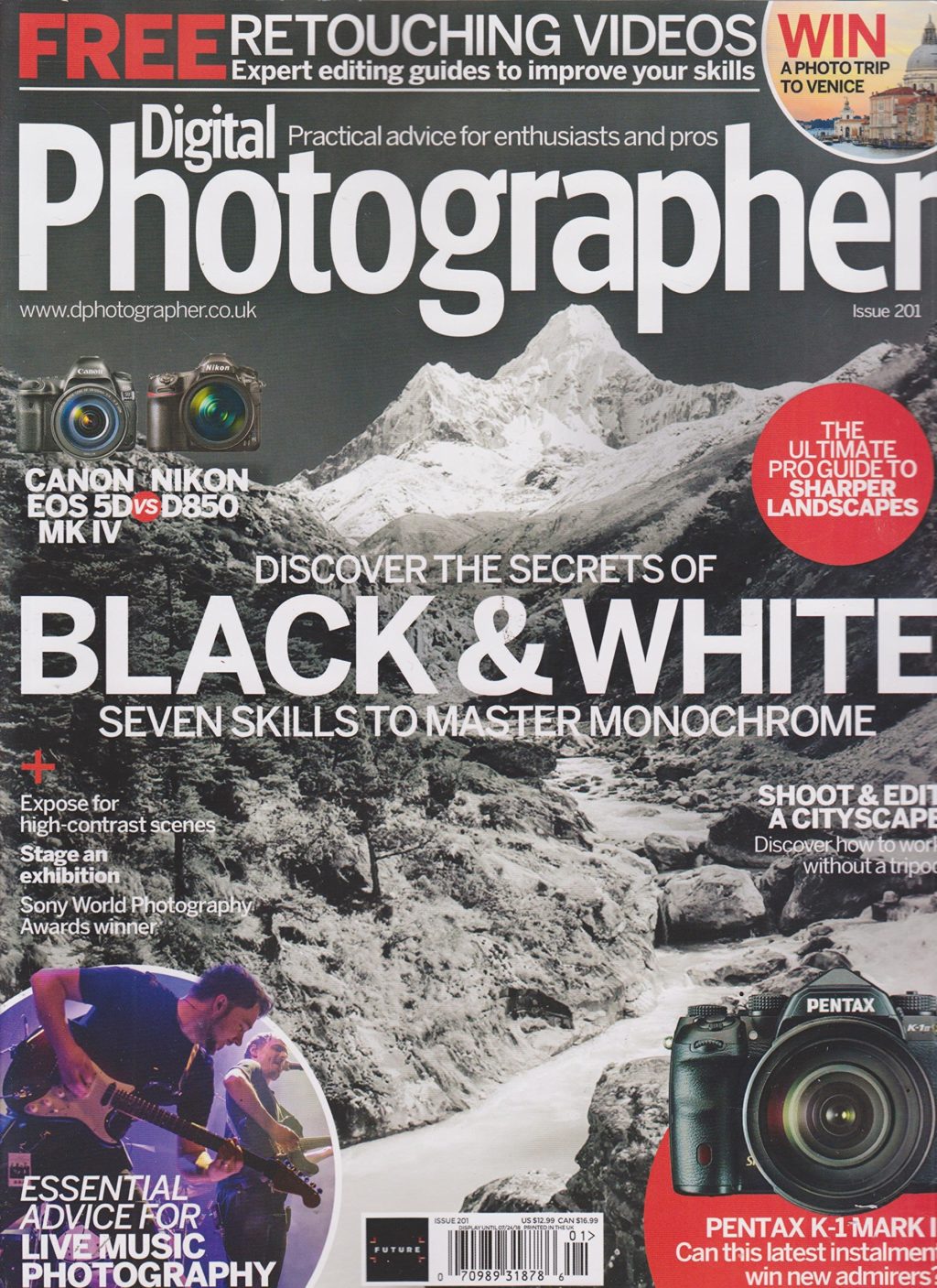This sort of question will always stir the emotions of any photographer and whilst we are here, and for the sake of balance we should add that the Canon EOS-1DX II and indeed any other professional DSLRs could have been used in the title. I should also add, that for those with an extreme passion for the DSLR, the answer is no it is not the last of its kind. However, if you have been following the seemingly exponential rise of photographic technology over the last few year you will have noticed two major things. Firstly that DSLR technology seems to be reaching a plateau of what can be achieved with that technology. Secondly that mirrorless technology seems to be nowhere near reaching a plateau. So lets have a look at where the DSLR still reigns supreme and also where mirrorless is chipping away at it’s kingdom.
[url=https://flic.kr/p/CMKtH2][img]https://farm2.staticflickr.com/1518/24146568991_48b8da3aca_z.jpg[/img][/url]
The D5 and it's Canon counterpart are the pinnacle of DSLR technology. By Kārlis Dambrāns
The Current Advantages of Pro DSLRs:
First and foremost is the sheer variety and quality of lenses available. From super wides to extreme telephotos, from f1.2s to perspective control lenses, there is an optic for every type of photography. These lenses are part of a very mature technology born from the days of the film SLR.
Secondly, speed. Not just the ability to shoot 10 frames a second but also lightning fast autofocus and focus tracking. These are vital requirements for the action and wildlife photographer who need to know and trust that their equipment is getting them the shots.
Optical Viewfinders. For some viewing the image through a live, optical viewfinder is the only way to connect with the scene you are photographing.
Range of Accessories. There is a huge range of accessories in the DSLR market from dedicated flashguns to remote controls and infrared triggers.
Existing Market. By this I mean that the DSLR user base is huge and mature. Manufacturers know that by producing new cameras and lenses they are continuing to tie in their customers to their products. Changing brands is an expensive option often with a steep learning curve.
[url=https://flic.kr/p/e8ajgz][img]https://farm9.staticflickr.com/8119/8613670919_c2c54b39ce_z.jpg[/img][/url]
In Lenses and Accessories the DSLR Market is still ahead. By Rob124
So What of the Future?
If you had asked this question two or three years ago, we could well have added many other advantages to the DSLR. Full frame sensors, low light capability, professional quality video to name just a few. The fact is though that, one by one, these advantages are being chipped away by the new technologies. Full frame is no longer a mirrorless pipe dream, Sony have seen to that. The same applies for low light capabilities, sensor technologies such as Fuji’s X-Trans are as good as any APS-S sized DSLRs in low light and by some measures, better. Professional video on DLSR, a preserve once wholly owned by the Canon EOS 5D has significantly shifted towards the Panasonic GH4 with its ability to record ultra high quality 4K.
[url=https://flic.kr/p/nidpU9][img]https://farm8.staticflickr.com/7447/13978294300_d0583097c0_z.jpg[/img][/url]
The Panasonic GH4 took big chunks out of the EOS 5D video market. By Dave Dugdale
Over the last year one of the biggest changes we have seen is the rapid expansion of the lens bases for mirrorless. Fast telephotos are on the way, ultra wides and ultra fasts are already here. Focussing speed and accuracy has improved dramatically and now rivals DSLRs.
Perhaps the biggest change though has been the consumer base. By most measures mirrorless camera are outselling DSLRs by a factor of several times. Whilst this is more at the consumer/prosumer level the importance of this cannot be understated. The profits from this upsurge in users will fund research in to newer and better equipment and as this level of the market begins the saturate, the natural progression is for the companies to target the professional market. We have already seen this in Sony’s Alpha 7R II, a 42mp full frame camera with the lens and accessories to back it up. There are few that can deny that this is a professional level camera and aimed at taking a slice of the pro DLSR market.
[url=https://flic.kr/p/C4ques][img]https://farm6.staticflickr.com/5762/23667570796_2f791552bf_z.jpg[/img][/url]
42mp from a mirrorless camera: By Julian Holthaus
The Thread to the Incumbent Manufacturers
The most interesting change in the market though has been the manufacturers. The might of Nikon and Canon is being challenged in way we have not seen for a long time and they are not responding as quickly as they should. Their answer has been to produce the D5 and EOS -1DX II and only devoting a seemingly small percentage of their budget to mirrorless technology. This could be their downfall. In much the same way in the 80s and 90s Kodak believed that because they were the cornerstone of the market, that the market followed them. They failed to understand and capitalise on the emerging technologies of digital photography leading to a point where today they are a shell of a company.
The Last of Its Kind?
So back to the original question. Is the Nikon D5 the last of its kind. The answer is no, but it may be the best of its kind. The production cycle of professional DSLRs is around 4-5 years. Think back to five years ago and think about mirrorless technology. Most of us wouldn’t even know what mirrorless was, perhaps the term had not even been coined. Now think where mirrorless is today and project that 4-5 years into the future.
We will leave you with this thought. The Nikon F5 was probably the best Nikon professional film camera ever produced. The Nikon F6 was the last professional film camera Nikon ever produced.





18 Comments
I think third on the list for Pro’s of of DSLR’s over mirrorless should have been battery life. On a mirrorless system, I’ve usually gotten a 1:3 ratio of use to charge time. With a 5D equivalent system, that ratio almost flips, and with a 1-series body there’s not even a need to measure the ratio. Regardless of the “take more batteries” and the “back in the film days” arguments, technology is the application of science to improve our lives and my mirrorless system simply requires more preparation time for less shooting time.
If battery life is that important why did nearly everyone abandon film? Changing batteries once every few months was not atypical before digital.
I wouldn’t call battery charging, preparation time. It is an out-of -sight out-of-mind process that involves only seconds of photographer time.
Agree, it is only a matter of time. It is becoming easier to move to Sony, especially if you are a Canon owner. A convertor which allows a Sigma lens with Canon mount to fit on to Sony E mounts. Watch the video on the following web page, impressive stuff!
https://www.dpreview.com/news/8547380272/cp-2016-sigma-mc-11-adapter-allows-dslr-lenses-full-range-of-af-modes-on-sony-bodies
This book is well worth a read, it delves into why companies frequently hold onto the exisiting technology and fail to appreciate where the future lies.:
A thought provoking article.
Ultimately companies will look at profit centers and with the example of Kodak those slow to embrace technologies will suffer. Yet there remains a silver lining and utilisation of those profits into more R & D of the DSLR could maintain a 2 tier market.
I would like to know in what why ML will be better then DSLR? Smaller? Is that always better? Faster framerate ? Is it really needed? Yes in some conditions but would I need more then 14 fps? Cannot see that the focus system will soon catch up? Battery life for me as Wildlife photographer is very important. Lens adaptors is another link that can become a weekness in harsh conditions? So Please help me here?
Size was critical for me. I am in my 70s and can’t be bothered carrying around my Canon 60D and 4 lenses up mountain trails any longer. Plus my ordinary day pack with jacket, food and drink. So I have gone mirrorless – Fuji XT1 and just three lenses, 10-22, 56 prime and 70-140 as well but only if I expect to be shooting wildlife. Hard to credit the lack of response from Canon and Nikon to the challenge of Sony, Panasonic and Fuji plus others.
The article mentions the rapid progress of ML. Interesting watching this from a distance. Sensors in particular are improving out of sight with fantastic resolution and rapidly-improving focus speed.
Maybe I will buy D5 and check this camera in practise. I like mirrorless cameras but I am still afraid to use them to professional work.
Very interesting – I started migrating my event work except weddings to Mirrorless two years ago. I still use the FF Nikons for all of my wedding and most portrait work. However, I hope that by 2017 mirrorless cameras are my main go to cameras. The main reason, after a long wedding or back to back portrait sessions, my body is beggin for lighter gear.
Hi Jason
You state that DSRL technology has reached ot is about to reach a plateau of what can be achieved with this technology. You do not specify exactly what this plateu is – could you expand? Otherwise I do not understand what you mean. I could imagine that some day in the near future EVF will become better than OVF. So we could get away with mirrors. I do not think that this new camera would be much of a problem for canikon to build. In principle they do not need to do much, on the contrary, they gain room in the body, which can be filled with other – even non-mechanical goodies – and here they go. or they make the body a bit smaller. I see no problem in that, so canikon would be still here in usual power. For that matter one could say through past innovation DSRL is a name, which hangs on digital cameras from the past because of one part of the body, which still is important, but not in such big way as in the past ( as opposed to ramgefinders and to Rolleiflexes). This might be looked at as important or not so. Still the question remains: What plateau do you mean? Maybe I misunderstood something, could you please clarify? Ich hank you in advamce.
Size? Try attaching a walk around lens to a mirrorless and you will find out that its advantage against a DSLR in terms of size shrinks. Oh, buy instead zooms with less variable focal lengths and carry 3 instead of 1. Wait, buy primes since they are usually smaller and carry around 5 of them. Oh, surprise, you may need to buy a bigger bag to house all of these gear. I will surmise a guess, the new gear is going to cost more than twice that of a brand new DSLR with the same set of lenses. Just my opinion
Sony is a joke. Poor ergonomics, a confusing menu system, dubious durability, poor service, lack of a comprehensive range of lenses and accessories, poor battery life, need I go on?
I will admit that if a photographer can master these deficiencies they do produce good images, although I wonder how much of this is the skill of the photographer in post-processing rather than in any attributes of the camera.
As Ming Thein stated the A7RII is an electronic gadget, not a camera.
Mirrorless cameras largely appeal to those who think that because something is ‘new’ it must be better than anything produced before. The technology companies (not only camera) thrive on this naivety and keep pushing their new and ‘better’ products on a gullible public. Sony are experts at this.
I’m not sure size can be an argument here. Some of the mirrorless lens are quite sizeable and not balance well with diminutive bodies. Sony’s FF mirrorless lens lineup consists of glass essentially the same size as the ones for FF DSLRs.
Predicting the death of the DSLR is premature I think and even with decent progress on the mirrorless side (better AF, better EVFs and so on) I believe the former will still be the preferred package for some uses. I mean look at vinyl in comparison. The format was declared dead at the beginning of the ’90s by the surge of CDs… the stuff was marked down significantly (sweet!!!) and whatever was not sold was pulled from the shelves by mid ’90s. Fast forward to today and the CDs are falling by the wayside displaced by other digital means of delivery, while vinyl rack space is extending…
As for myself I would love to have a body as rugged as my D3s with a cracking hybrid EVF of some sort that would be just as good as an OVF and could be switched to some IR mode for those times when the lights on the dance floor go down and the wedding party kicks in high gear… Oh and it needs to take my trusted f/2.8 zooms with no adapters (don’t need an additional potential point of failure)…
Only time will tell
The most likely scenario would be adoption of ML tech into an existing dslr design. Canon had the eos rt in the days of film with a semi-reflective mirror so it’s not impossible. Whilst the Sony cameras have some good points, as far as Sony and innovation is concerned need one say more than Betamax or Minidisc? They don’t seem to follow through. Personally, because of experience of poor longevity with their domestic products (tv, dvd-hd recorder, sound system) I wouldn’t touch them as I couldn’t guarantee equipment failure. I also believe from recent reports that the paucity of lenses is due to the FF sensor being hobbled by the lens mount that was designed for a crop-sensor range of cameras. One of the manufacturers producing FF dslrs will have to come to the party with a ML design, existing lens mount and a comprehensive back catalogue of lenses. Otherwise, the biggest attraction of ML is that the cameras aren’t big so Fuji X series, Olympus OM & Pen, Panasonic have it about right from that perspective with a growing range of decent glass and increasing professional usage and support. The good news is, whatever the gear is we will all be out there using the stuff we like and debating whether or not the next thing is better. Have fun shooting with whatever you are using.
I like looking through the view finder, not at a screen. Easier to see, focus, and compose the frame regardless of light conditions. I’ll stay with the dslr, thanks anyway.
What I have seen is the Mirror-less are great in bodies but heavy at lenses. So, its almost the same that I trade off my DSLR gear to pack mirror-less. Just on the weigh constrains (and perhaps sizes at the moment) its the same thing or more on the heavy end.
Perhaps with the technology evolves, they might be see some better results where that could let me re think my purchasing and pack my bag full of Mirror-less.
I think, when mirrorless provide the same “Realtime” view as the optical view finder experience in DSLR, they will replace DSLR. The speed of electronics is less than light, but the difference can become indistinguishable by human eye. There is no real reason why future mirrorless cannot be made compatible with existing DSLR lenses, just as DSLRs are compatible with the lenses made for film cameras.
DSLRs are out selling mirrorless 3 to 1
and while dslr sale are dropping, so does mirrorless.